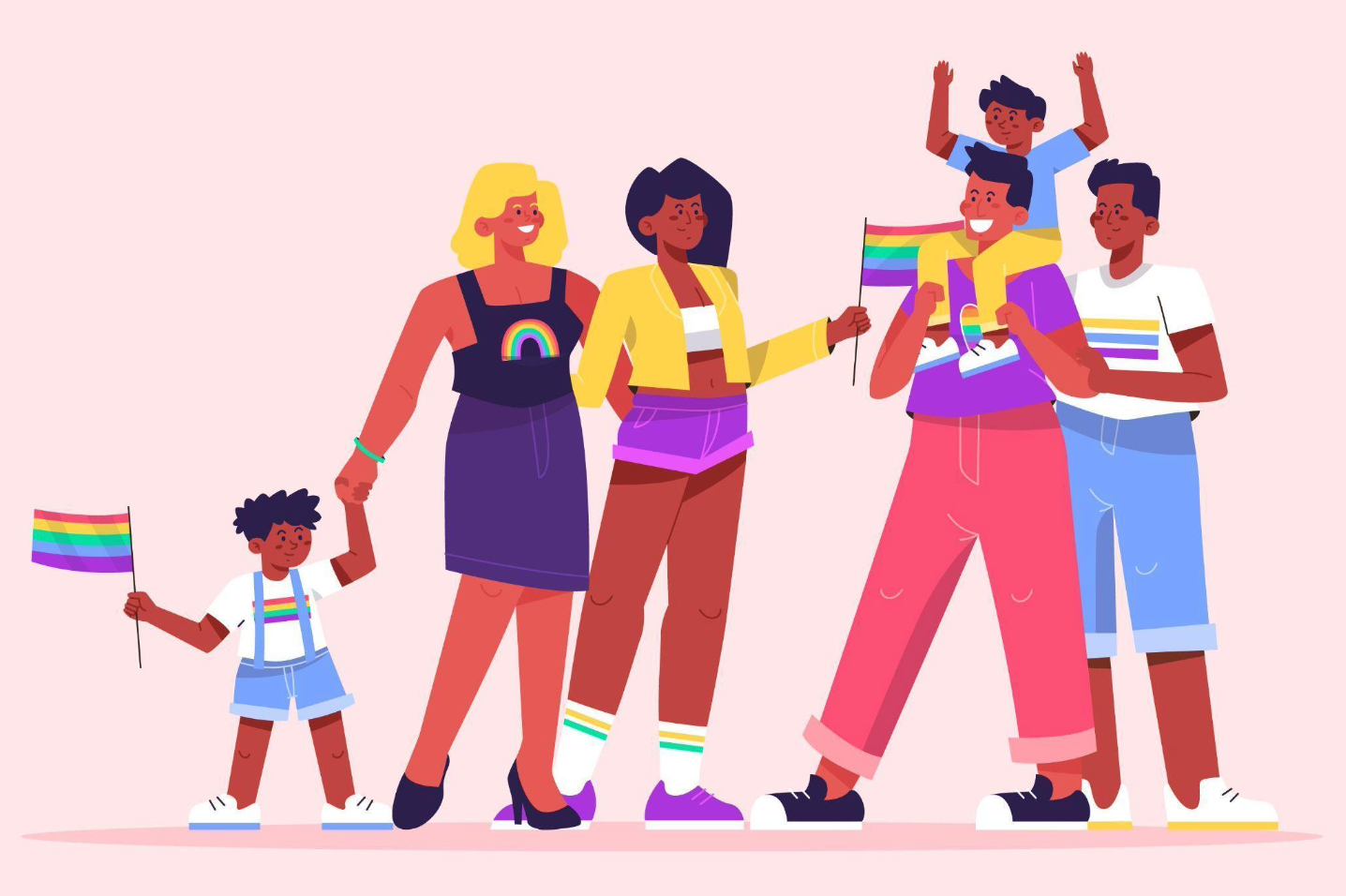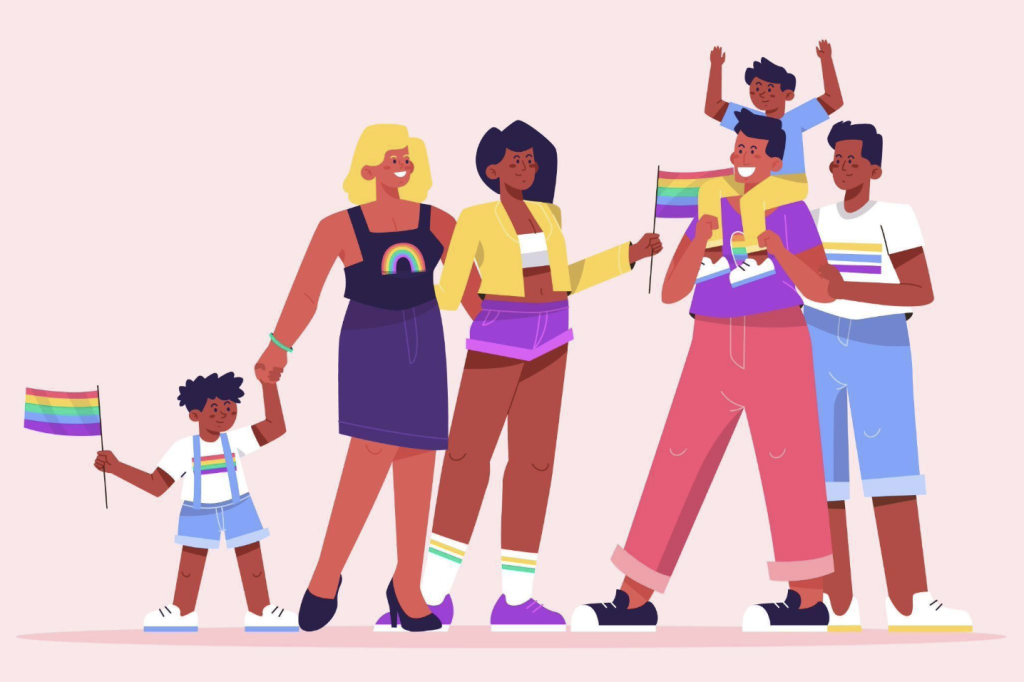
Family Matters: Navigating Acceptance and Support for LGBTQ+ Individuals.
Building a strong and supportive family unit is crucial for every child’s well-being. However, for LGBTQ+ youth, family acceptance takes on an even greater significance, directly impacting their mental and physical health. This article explores the importance of accepting and supporting LGBTQ+ individuals within their families, offering practical strategies, resources, and guidance to create a safe and affirming environment.
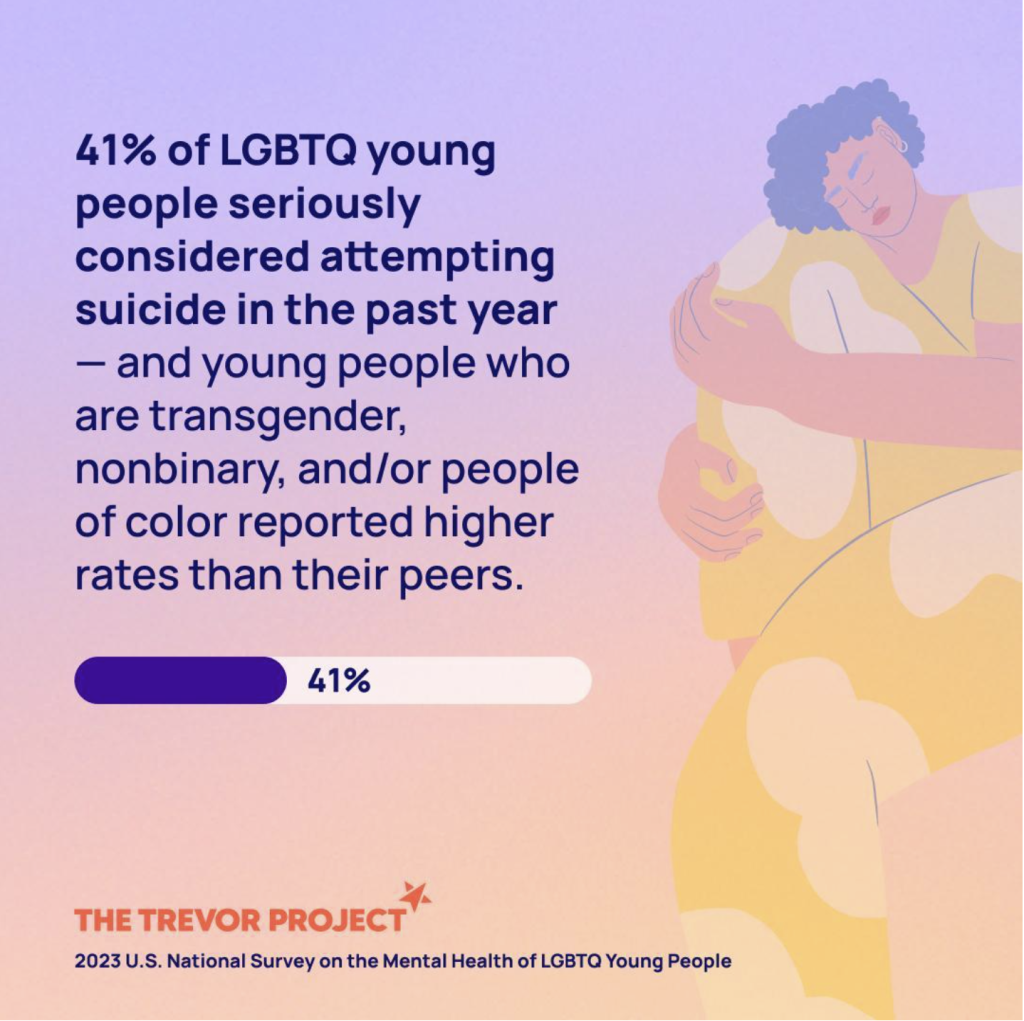
1. Introduction to Family Acceptance and LGBTQ+ Youth Well-being.
The acceptance and support of families play a pivotal role in the overall well-being and healthy development of LGBTQ+ youth. According to The Trevor Project’s 2023 U.S. National Survey on the Mental Health of LGBTQ Young People, 41% of LGBTQ+ young people seriously considered attempting suicide in the past year, with higher rates reported among transgender, nonbinary, and youth of colour. Family rejection is a significant risk factor contributing to these alarming statistics.
Research consistently shows that LGBTQ+ youth who experience high levels of family rejection are at an increased risk of depression, substance abuse, and suicidal ideation compared to those who receive support and affirmation from their families. Conversely, LGBTQ+ youth who experience high levels of family acceptance report significantly higher levels of self-esteem, social support, and overall health.
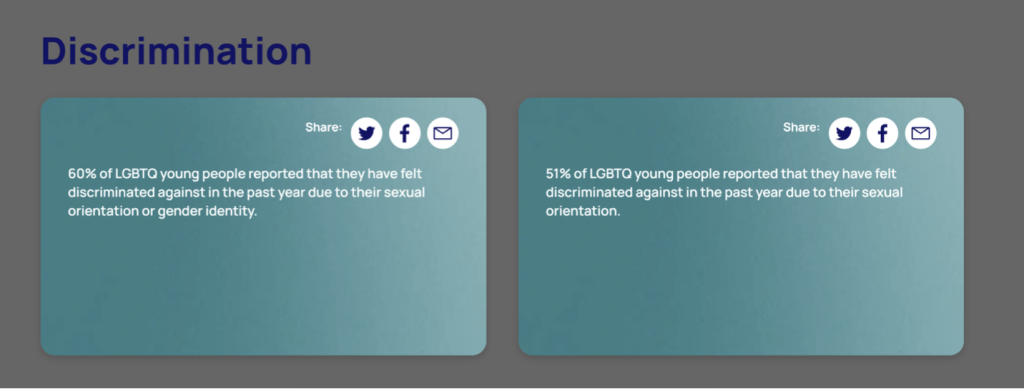
2. Understanding LGBTQ+ Youth and Family Dynamics.
Families play a crucial role in shaping the experiences and outcomes of their LGBTQ+ children. The dynamics within families can significantly impact the well-being of LGBTQ+ youth, both positively and negatively. Several factors contribute to these dynamics, including cultural beliefs, religious values, and societal norms.
In some families, LGBTQ+ identities may be met with disapproval, rejection, or even abuse, which can have severe consequences for the mental and physical health of LGBTQ+ youth.
The Trevor Project’s survey found that 60% of LGBTQ+ young people felt discriminated against due to their sexual orientation or gender identity, and 24% reported being physically threatened or harmed in the past year for the same reasons.
On the other hand, families that embrace and support their LGBTQ+ children can create a nurturing environment that fosters self-acceptance, resilience, and overall well-being. The survey revealed that LGBTQ+ young people who had access to affirming homes, schools, and online spaces reported lower rates of attempting suicide compared to those who did not.
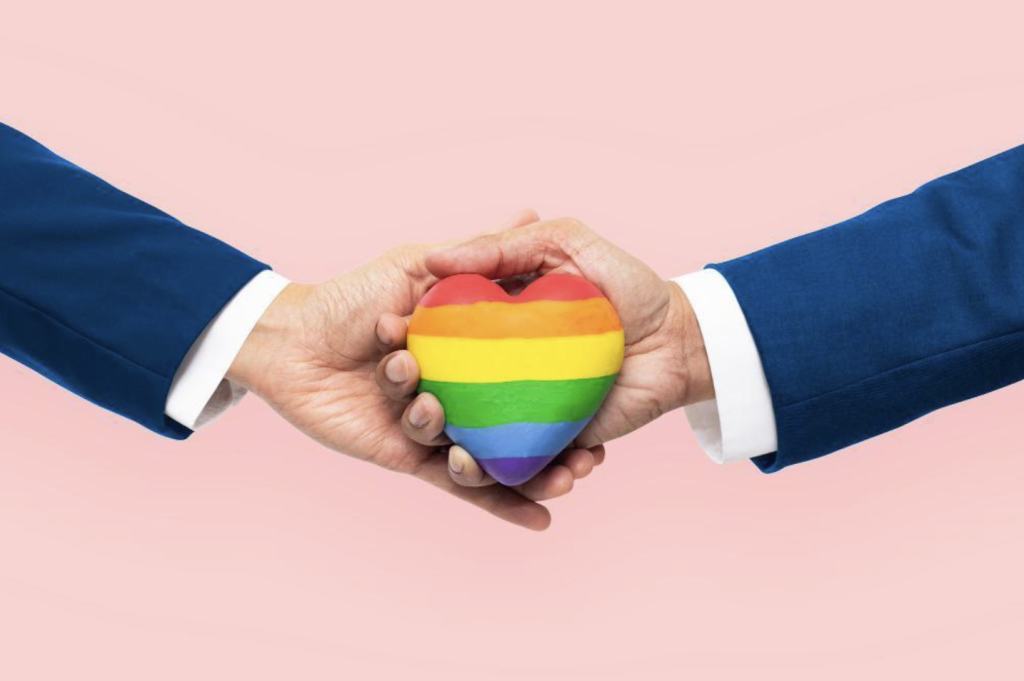
3. Strategies for Supporting LGBTQ+ Children
Creating a supportive environment at home is essential for the well-being and healthy development of LGBTQ+ children and youth. Here are some strategies that families can employ:
- Educate Yourself: Learn about LGBTQ+ identities, experiences, and issues. Seek out reliable resources, attend workshops or support groups, and engage with LGBTQ+ communities to better understand and appreciate diversity.
- Use Affirming Language: Respect and use the correct names, pronouns, and terminology preferred by LGBTQ+ individuals. The Trevor Project’s survey found that transgender and nonbinary young people reported that all the people they live with
- respect their pronouns had lower rates of attempting suicide.
- Express Unconditional Love and Acceptance: Let your child know that you love and accept them unconditionally, regardless of their sexual orientation or gender identity. Create an environment where they feel safe, respected, and valued for who they are.
- Advocate for Your Child: Be an ally and advocate for your child in various settings, such as schools, healthcare facilities, and other social environments. Speak up against discrimination, bullying, and prejudice.
- Connect with Support Networks: Join support groups or organizations for parents ofLGBTQ+ children, where you can share experiences, seek advice, and find community. The Trevor Project’s survey found that LGBTQ+ young people who had access to affirming online spaces reported lower rates of attempting suicide.
- Seek Professional Guidance: If needed, consider seeking professional counseling or therapy to help your family navigate any challenges or concerns that may arise. A qualified mental health professional can provide guidance and support tailored to your specific situation.
4. The Role of Communication in LGBTQ+ Acceptance.
Open and honest communication between parents and their LGBTQ+ children is essential for fostering understanding, acceptance, and a strong, supportive relationship. Effective communication can help bridge gaps, reduce misunderstandings, and create an environment of trust and empathy.
Parents must create a safe and non-judgmental space for their children to express themselves freely. This may involve actively listening without criticism, validating their child’s feelings and experiences, and being willing to have difficult conversations. Parents should also be mindful of their tone, body language, and the words they use, as these can significantly impact the quality of communication and the level of trust established.
5. Navigating Challenges within the Family and Society.
While striving to create an accepting and supportive environment for LGBTQ+ individuals, families may encounter various challenges within their own dynamics and broader societal pressures.
Challenges such as:
a. Family Dynamics and Beliefs: Differing religious, cultural, or personal beliefs among family members can create tensions and conflicts surrounding LGBTQ+ identities. It is essential to approach these challenges with empathy, respect, and an openness to dialogue and understanding.
b. Societal Stigma and Discrimination: LGBTQ+ individuals and their families may face societal stigma, discrimination, and prejudice, which can contribute to feelings of isolation, fear, and stress. The Trevor Project’s survey found that nearly two-thirds of LGBTQ+ young people said that hearing about potential state or local laws banning discussions about LGBTQ+ people at school made their mental health significantly worse.
c. Intersectionality and Multifaceted Identities: LGBTQ+ individuals often hold multiple intersecting identities, such as race, ethnicity, disability, or socioeconomic status, which can compound the challenges they face. Families should strive to understand and support the full spectrum of their loved one’s identities and experiences.
d. Generational Differences: Generational gaps and differing perspectives on LGBTQ+ issues can create barriers within families. Open communication, education, and a willingness to learn from one another can help bridge these divides and foster greater understanding and acceptance. Here is a story from a Reddit user that highlights a generational gap issue LGBTQ+ teenagers face.
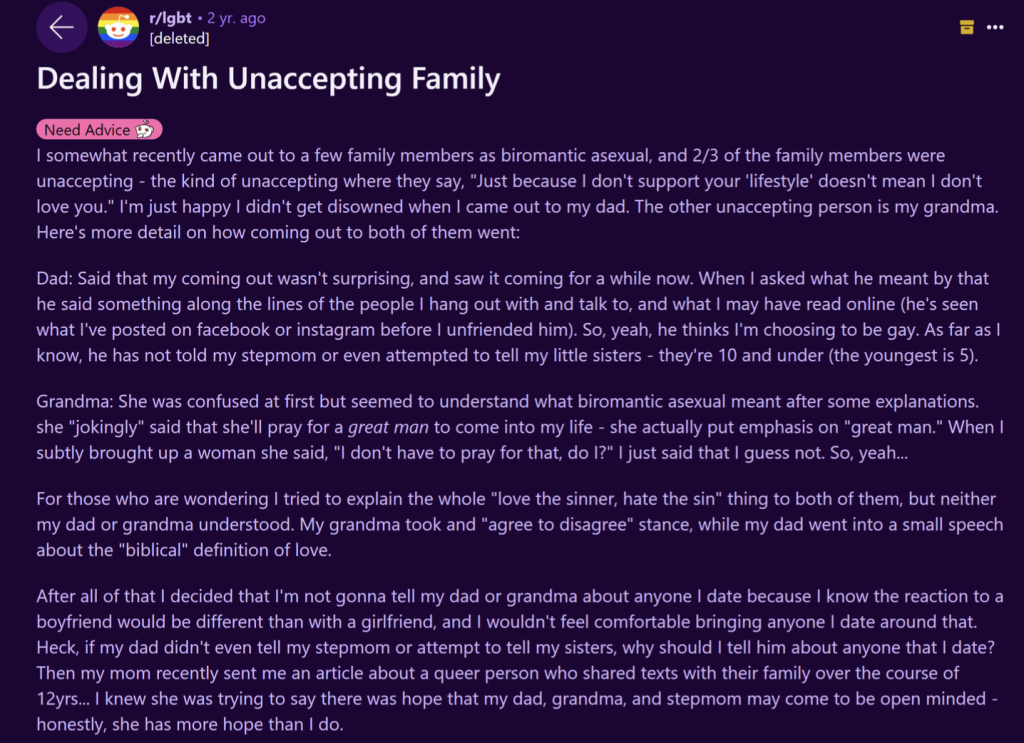
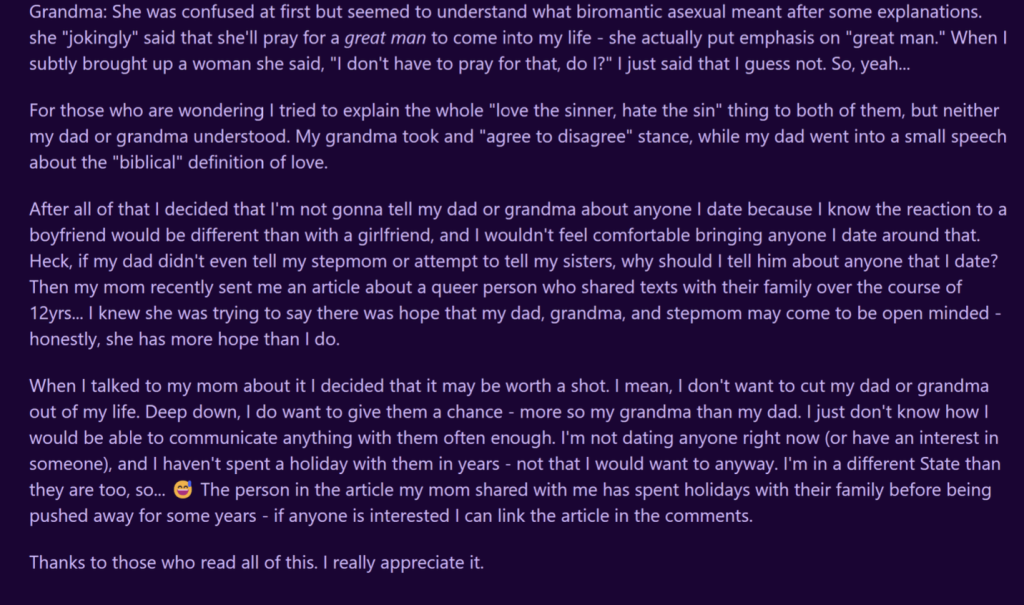
e. Mental Health and Well-being: The challenges and discrimination faced by LGBTQ+ individuals can take a toll on their mental health and well-being. The Trevor Project’s survey revealed that nearly one in three LGBTQ+ young people said their mental health was poor most of the time or always due to anti-LGBTQ+ policies and legislation. Families should be aware of the potential mental health risks, such as depression, anxiety, and suicidal ideation, and be prepared to seek professional support when needed.
6. Resources and Support for Families and LGBTQ+ Youth:
Navigating the journey of acceptance and support for LGBTQ+ individuals can be challenging, but families do not have to go through it alone. There are numerous resources and support networks available to provide guidance, education, and emotional support.
a. Educational Resources: Organizations such as The Trevor Project, PFLAG, the Family Acceptance Project, and the Human Rights Campaign offer a wealth of information, resources, and educational materials to help families understand LGBTQ+ identities, experiences, and best practices for providing support.
b. Crisis and Hotline Support: For LGBTQ+ youth and their families facing crises or in need of immediate support, organizations like The Trevor Project and the LGBTQ+ National Youth Talkline provide free, confidential crisis intervention and support services.
c. Local LGBTQ+ Community Centers and Organizations: Many communities have LGBTQ+ community centres or organizations that offer support groups, counselling services, and resources tailored to the needs of LGBTQ+ individuals and their families.
d. Mental Health and Counseling Services: Seeking professional counselling or therapy can be beneficial for both LGBTQ+ individuals and their families. Mental health professionals trained in LGBTQ+ issues can provide guidance, support, and strategies for navigating the challenges and fostering a supportive environment.
e. Support Groups for Parents and Families: Organizations like PFLAG and local LGBTQ+ community centres often host support groups specifically for parents and families of LGBTQ+ individuals. These groups provide a safe space to share experiences, seek advice, and find community with others on a similar journey.
f. Online Resources and Forums: In addition to in-person support, numerous online resources, forums, and communities offer valuable information, advice, and peer support for families navigating LGBTQ+ acceptance and support.
7. Building a Safe and Affirming Environment.
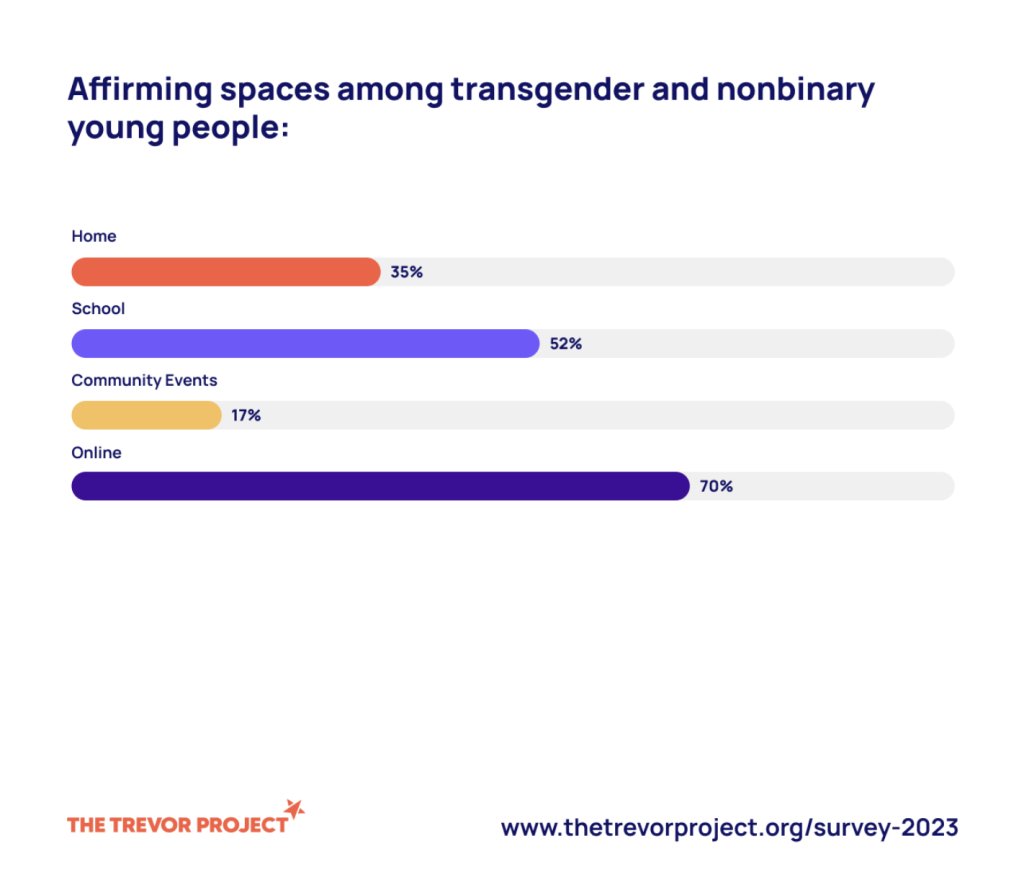
Acceptance from family is a powerful force in the life of an LGBTQ+ youth. Here’s how to create a safe and affirming environment:
- Importance of Affirmation of Children’s Identity and Acceptance: Let your child know their identity is valid and worthy of love and respect. Celebrate their milestones and achievements.
- Responding to Coming Out: Coming out can be a scary and emotional experience for your child. Respond with love, support, and a willingness to learn more about their identity.
It’s important to note that every LGBTQ+ person’s journey is unique. Respect your child’s pace and boundaries when discussing their identity or experiences.
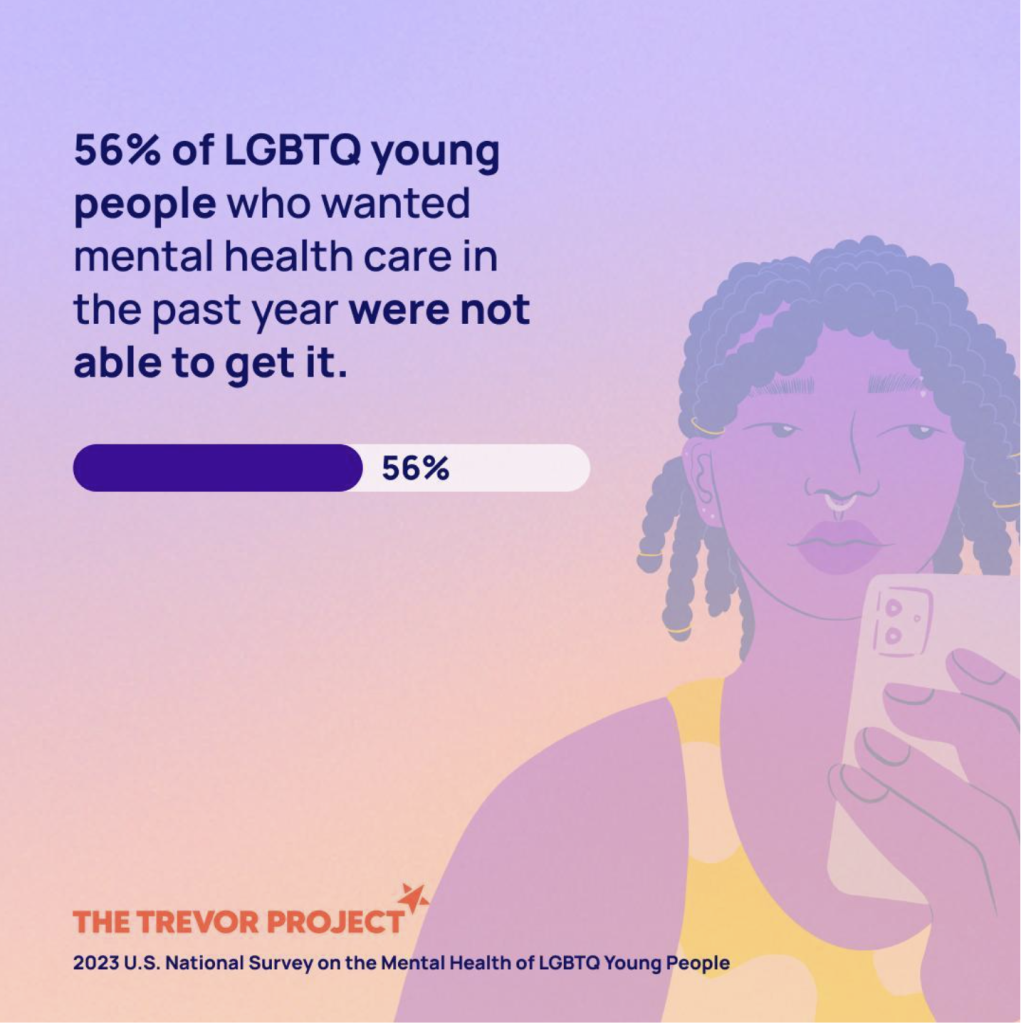
8. Mental Health Considerations for LGBTQ+ Youth.
LGBTQ+ youth face unique challenges that can negatively impact their mental health. We briefly explore the link between family acceptance and mental well-being and discuss common mental health concerns for LGBTQ+ youth.
Impact of Family Acceptance on Mental Health
As we previously mentioned above, research consistently shows a strong correlation between family acceptance and positive mental health outcomes for LGBTQ+ youth. Studies indicate that youth who experience rejection from their families are at a higher risk for depression, anxiety, substance abuse, and suicidal ideation and attempts. Conversely, accepting and affirming families create a safe space for LGBTQ+ youth to explore their identity, fostering resilience and promoting mental well-being.
Common Mental Health Concerns
LGBTQ+ youth are more likely to experience a range of mental health challenges compared to their heterosexual peers. These include:
- Depression: A depressed state is characterized by emotions of sorrow, despair, and a lack of enthusiasm or motivation for activities.
- Anxiety: Excessive worry, nervousness, and physical symptoms like rapid heartbeat or difficulty breathing.
- Eating Disorders: Unhealthy eating patterns and distorted body image.
- Self-Harm: Deliberately causing bodily harm or injury to oneself.
- Suicidal Thoughts and Behaviors: Considering or attempting suicide.

9. Advocating for Safe and Inclusive Spaces.
Creating safe and inclusive spaces for LGBTQ+ individuals is essential for their overall well-being, personal growth, and sense of belonging. Advocating for such spaces in various settings, such as schools, workplaces, and community environments, is crucial to fostering acceptance, respect, and inclusivity.
A. Schools and Educational Institutions: Schools play a pivotal role in shaping the experiences and development of LGBTQ+ youth. Advocating for inclusive and affirming policies, comprehensive anti-bullying programs, LGBTQ+ student organizations, and inclusive curriculum can create a safe and supportive learning environment.
The Trevor Project’s survey found that roughly half of transgender and nonbinary young people found their school to be gender-affirming, and those who did reported lower rates of attempting suicide.
B. Workplaces and Professional Settings: LGBTQ+ individuals should feel safe and respected in their workplaces and professional environments. Advocating for non-discrimination policies, diversity and inclusion initiatives, and fostering an inclusive culture can promote a sense of belonging and create an environment where LGBTQ+ employees can thrive.
C. Healthcare Settings: Access to inclusive and affirming healthcare services is essential for the well-being of LGBTQ+ individuals. Advocating for LGBTQ+ competent healthcare providers, inclusive policies, and non-discriminatory practices can ensure that LGBTQ+ individuals receive quality care and feel respected and supported.
D. Community Spaces and Organizations: LGBTQ+ community centres, support groups, and social organizations play a vital role in creating safe spaces for individuals to connect, find support, and celebrate their identities. Advocating for the establishment and funding of these spaces, as well as promoting their visibility and accessibility, can foster a sense of community and belonging.
E. Public Spaces and Events: Public spaces and events should be welcoming and inclusive for all individuals, regardless of their sexual orientation or gender identity. Advocating for inclusive policies, comprehensive anti-discrimination laws, and raising awareness can help create safe and affirming environments in public spaces.

10. Conclusion and Further Resources.
Family acceptance and support are crucial for the well-being and healthy development of LGBTQ+ individuals, particularly youth and young adults. By fostering a nurturing and affirming environment, families can play a vital role in mitigating the risks of mental health issues, substance abuse, and other negative outcomes associated with rejection and discrimination.
Throughout this article, we have explored the profound impact of family acceptance, strategies for supporting LGBTQ+ children, the importance of open communication, navigating challenges within families and society, and the need for safe and inclusive spaces. It is essential to recognize the intersectionality of identities and experiences within the LGBTQ+ community and strive to create environments that celebrate diversity and promote inclusivity.
While the journey toward acceptance and support may present challenges, families do not have to navigate it alone. There are numerous resources and support networks available, including educational materials, crisis hotlines, community centres, mental health services, and support groups for families and LGBTQ+ individuals.
Some valuable resources include:
The Trevor Project is the leading suicide prevention and crisis intervention nonprofit organization for LGBTQ+ young people. They provide information and support to LGBTQ+ young people 24/7, all year round. Their services include crisis intervention and suicide prevention, information and resources, and creating a safe, affirming community for LGBTQ+ young people.
PFLAG is the first and largest organization dedicated to supporting, educating, and advocating for LGBTQ+ people and their families.
The Family Acceptance Project® (FAP) was founded in 2002 by Dr. Caitlin Ryan and Dr. Rafael Diaz. It is a research, intervention, and education initiative aimed at preventing health risks and promoting well-being for LGBTQ children and youth.
Families and communities can create a positive impact by adopting an accepting attitude, cultivating an inclusive environment, and providing a supportive space. This nurturing approach can contribute significantly to the well-being and resilience of LGBTQ+ individuals, fostering a society that embraces diversity and empowers people to live authentically. Remember, the journey toward acceptance and support is an ongoing process that requires patience, empathy, and a commitment to creating a more inclusive and affirming world for all.

